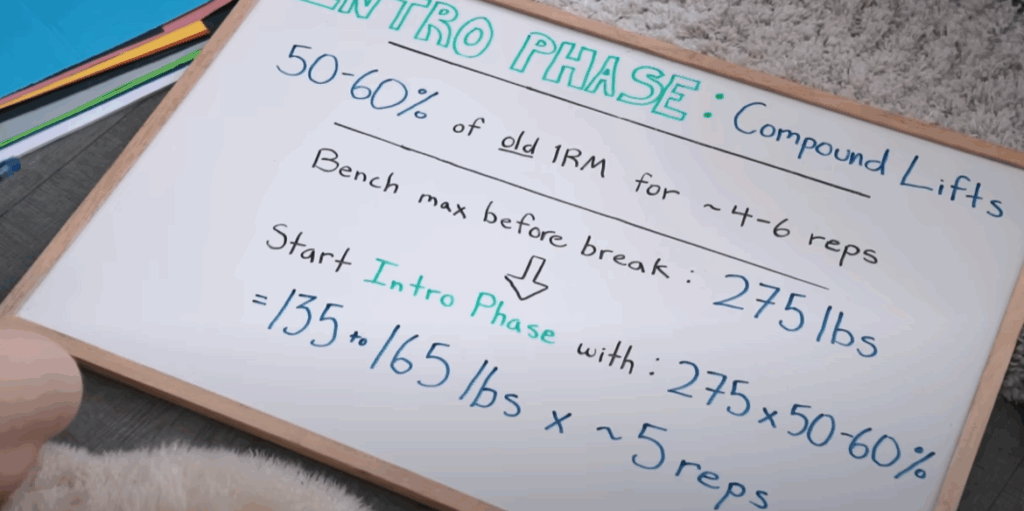How to Rebuild Muscle Fast After a Training Break: A Smart, Structured Comeback Plan
Whether it’s due to injury, burnout, vacation, or life simply getting in the way, taking time off from training is inevitable. But once you’re ready to return to lifting, the big question becomes: how do you regain lost strength and muscle efficiently—without overtraining or risking injury?
Many lifters feel the urge to jump right back into their old routines, but rushing back with full intensity often leads to frustration, fatigue, and stalled progress. If your goal is to reclaim your gains in the fastest, most sustainable way, here’s a strategic four-step framework to guide your return to the gym.

Step 1: Leverage Muscle Memory for Rapid Rebuilding
Believe it or not, regaining lost muscle is usually much faster than building it in the first place. This is thanks to muscle memory—a phenomenon where previously trained muscles can “reawaken” quickly after a period of detraining. Even after months off, the cellular adaptations from previous training help you bounce back faster than beginners.
So while it may feel like you’ve lost everything, the truth is you’re not starting from scratch. In fact, with the right approach, you can regain size and strength in a fraction of the time it originally took to build.
However, this supercharged comeback depends on planning. One of the biggest mistakes people make is winging their return. Without structure, you’re more likely to overdo it—pushing hard before your body is ready. Before stepping back into the gym, outline your program for the next few weeks. Treat this as a bridge phase that reconnects your body with the demands of serious training.
Step 2: Reset Your Strength Expectations
It’s normal to experience a drop in strength after a few weeks or months away from weights. Think of lifting as a skill—just like shooting basketballs or playing guitar. When you stop practicing, coordination and motor control decline. That’s not a permanent loss; it just needs time to recalibrate.
Expect lifts to feel heavier, even at lower weights. But with consistent practice, you’ll regain strength relatively quickly. A good rule of thumb: for every two months off, you’ll likely need about one month to restore most of your previous strength levels. If your break lasted six months, give yourself at least three months to rebuild.
Track your performance in a logbook to stay objective. Don’t worry about chasing old personal records right away. Focus instead on executing lifts with precision and consistency—your numbers will climb again.

Step 3: Choose Low-Fatigue Movements to Minimize Soreness
One of the most overlooked aspects of a successful return is exercise selection. When muscles haven’t been trained in a while, they’re especially prone to soreness. That soreness not only slows your recovery—it can reduce workout frequency, impair movement quality, and increase your risk of injury.
To avoid excessive soreness, focus on exercises that stimulate the muscles effectively without overstressing them. That means steering clear of movements that load muscles in a stretched position, such as Romanian deadlifts or walking lunges. These are excellent hypertrophy tools, but they’re brutal during the early comeback phase.
Instead, opt for machines, cables, and stable compound lifts. Leg presses, chest-supported rows, seated hamstring curls, and dumbbell presses are all great choices. These movements deliver solid muscle engagement with lower systemic fatigue.
Reserve free-weight compound lifts like squats, deadlifts, and barbell presses for later in the transition. When you do reintroduce them, use lighter loads and fewer sets to allow your body to re-adapt to their demands gradually.
Step 4: Follow a 4-Week Bridge Program
Rather than diving back into your old high-volume program, use a phased approach over 2–4 weeks. This “bridge” period is your body’s transition from inactivity (or light home workouts) back to regular strength training.
Weeks 1–2: Introductory Phase
The goal here is neuromuscular re-education—essentially reminding your body how to lift. For compound lifts, keep your effort level low, aiming for an RPE (rate of perceived exertion) of 5 or less. That means leaving about 4–5 reps in the tank.
Use around 50–60% of your previous 1-rep max. If you used to bench 275 pounds, start with 135–165 pounds for moderate sets of 4–6 reps. This feels light, but it’s exactly what your body needs to restore movement patterns and avoid joint irritation.
For isolation exercises, such as curls or lateral raises, you can push a little harder—up to RPE 7 or 8. Just avoid training to failure. These movements should help you reestablish mind-muscle connection and get a good pump.
Keep training volume moderate: about 7–10 sets per muscle group per week. This is enough to provide a stimulus without overwhelming your recovery. And aim to train each muscle twice per week—either with an upper/lower split (4 days/week) or a push-pull-legs structure (6 days/week).
Weeks 3–4: Transition Phase
As your body begins adapting again, you can gradually ramp up both volume and intensity. Increase compound lift loads to an RPE of 6–7, and move isolation lifts closer to failure (RPE 8–9) if recovery feels solid.
Begin adding sets to the exercises that feel best. If you were doing 2 sets during the intro phase, bump up to 3. You can also begin reintroducing more challenging movements like barbell squats or lunges—just be cautious with load and range of motion at first.
By the end of week four, you should feel confident lifting close to your old numbers, with better recovery, reduced soreness, and a strong foundation to resume progressive overload.

Final Thoughts: A Smarter Way to Make Your Comeback
It’s easy to let frustration drive you into a training frenzy after a break—but the smarter approach is a calculated one. Take advantage of muscle memory, but don’t abuse it by training too hard, too soon. Respect the principles of fatigue management, progressive overload, and structured progression.
By easing into your return with proper planning, you’ll rebuild faster than you expect—without injury setbacks or burnout. Remember: your old gains aren’t gone forever. They’re just waiting to be reawakened.
Want a Done-for-You Plan?
If you’re not sure where to start, a structured four-week bridge program is the perfect way to safely and effectively reclaim your progress. Look for programs that emphasize gradual volume increases, lower initial intensities, and smart exercise selection.
You’ll be back to smashing PRs in no time—stronger, smarter, and more resilient than ever.



